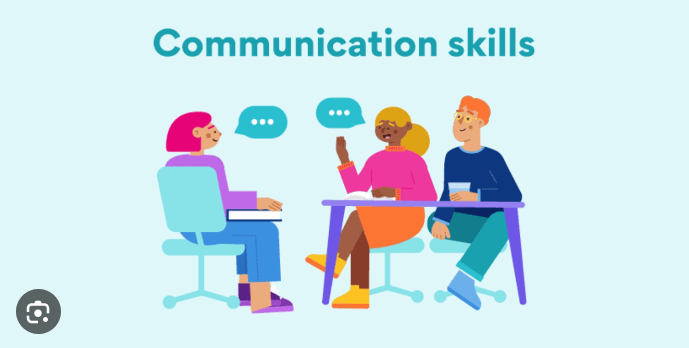Table of Contents
A profound shift is reshaping the landscape of education through the integration of cutting-edge digital tools. These transformative tools are not just changing how children learn; they’re redefining the entire educational experience. You will learn below about the impact of digital educational tools on children’s learning and development. As technology evolves, so does the way people approach education, and understanding these shifts is crucial for preparing the next generation for a future where digital literacy is paramount.
Interactive Learning Platforms

Digital platforms are at the forefront of a pedagogical revolution. They offer engaging and personalized experiences that transcend traditional teaching methods. By leveraging interactive lessons, games, and activities, these platforms cater to diverse learning styles, fostering a deeper understanding of complex subjects. The adaptability of these platforms allows students to progress at their own pace, ensuring that no child is left behind or held back, creating a more inclusive learning environment. In an era where individualized learning is gaining prominence, these platforms pave the way for a more equitable and effective educational system.
Downloadable Writing Worksheets
Downloadable writing worksheets play a crucial role in helping students establish a strong foundation in written communication. These resources, such as those available at https://studentreasures.com/teachers-lounge/lesson-plans/second-grade/, offer educators and parents valuable tools to support second-grade students in honing their writing skills. Accessible and printable, these worksheets provide structured exercises that reinforce fundamental concepts, making the learning process both effective and enjoyable.
E-Books and Audiobooks
The transition from traditional textbooks to digital reading materials, such as e-books and audiobooks, accommodates diverse learning preferences. Beyond accessibility, these formats cater to auditory and visual learners, enriching the reading experience for every student. Additionally, the interactive features often embedded in e-books provide opportunities for deeper engagement, allowing students to interact with content in ways that go beyond traditional reading methods. This fosters critical thinking and analytical skills as students navigate multimedia-rich educational materials.
Online Collaborative Platforms

Digital tools facilitate collaborative learning, transcending physical boundaries. Google Workspace for Education and Microsoft Teams provide seamless collaboration features, enabling students to work together on projects and assignments in real time, preparing them for future collaborative endeavors. Collaborative learning not only strengthens teamwork and communication abilities but also introduces students to a variety of perspectives, cultivating a global awareness and cultural competency. These qualities are vital in this interconnected world.
Coding for Kids
Recognizing the importance of early coding education, platforms like Scratch and Code.org offer playful interfaces that teach coding principles. This early exposure fosters computational thinking and problem-solving skills, preparing children for the demands of a digital future. Moreover, coding skills are becoming increasingly essential across various disciplines. Early exposure to coding not only cultivates a foundational understanding of technology but also enhances logical thinking and creativity.
Augmented Reality in Education
Augmented Reality (AR) introduces a fresh dimension to learning by superimposing digital content onto the real world. Google Expeditions, among other AR apps, enables students to explore subjects in a visually immersive manner, enhancing understanding and retention. As AR technology advances, the potential for more sophisticated and interactive learning experiences grows. This not only makes learning more enjoyable but also deepens comprehension by allowing students to interact with digital information in a tangible way, bridging the gap between abstract concepts and real-world applications.
Gamification for Educational Purposes
Gamified learning applications introduce an element of fun into the educational process. By incorporating game elements into lessons, these platforms motivate students to actively participate, transforming the learning journey into an enjoyable adventure. Beyond just making learning more engaging, gamification fosters a sense of competition and achievement, instilling a love for learning that extends beyond the classroom, preparing students for a lifetime of curiosity and self-driven education. The gamification of education also introduces elements of strategy and problem-solving, nurturing skills that are increasingly vital in navigating the complexities of the modern world.
Robotics in Education
The integration of robotics into education opens new frontiers for hands-on learning. Educational robots allow students to apply theoretical knowledge tangibly and practically. Through coding and programming these robots, students not only learn valuable technical skills but also enhance their creativity and critical thinking. Robotics education goes beyond the screen, providing a bridge between the digital and physical realms, preparing students for a future where collaboration with intelligent machines becomes commonplace. The practical application of robotics also instills a sense of accomplishment as students witness their code come to life in the form of a moving, interactive robot.
Artificial Intelligence and Personalized Learning
The infusion of Artificial Intelligence (AI) into education is transforming personalized learning. AI-powered platforms assess individual student progress, customizing lessons to address their specific needs. This adaptive learning approach guarantees targeted support for students in challenging areas while presenting challenges in areas where they excel. The continuous analysis of data by AI allows for real-time adjustments, making education a dynamic and responsive process. As AI continues to evolve, it promises a future where education is not a one-size-fits-all model but a bespoke journey for each student, unlocking their full potential.
Inclusive Learning Technologies
Digital tools have opened avenues for inclusive education, ensuring that every child, regardless of ability, can access quality learning experiences. Assistive technologies, such as speech-to-text software and screen readers, empower students with disabilities to actively engage in the learning process. The integration of inclusive learning technologies fosters a sense of belonging and equal opportunity, breaking down barriers and creating a more diverse and enriched educational environment.
Data Analytics and Educational Insights
The use of data analytics in education is transforming how educators assess student performance and tailor instructional strategies. Learning management systems and analytics tools offer valuable insights into student engagement, learning preferences, and areas that may benefit from additional support. By harnessing the power of data, educators can make informed decisions to optimize the learning experience, ensuring that each student receives the personalized attention needed for academic success.
Cybersecurity in Education
As digital tools become integral to education, the importance of cybersecurity cannot be overstated. The safeguarding of student data and privacy is paramount. Educational institutions are increasingly investing in robust cybersecurity measures to protect sensitive information from cyber threats. A secure digital learning environment not only ensures the safety of student data but also instills confidence in parents, educators, and policymakers, fostering a conducive atmosphere for the continued integration of digital tools in education.
Educational Apps for Skill Development
Specialized educational apps cater to specific skill development areas. These apps offer engaging activities aligned with educational goals, providing a targeted approach to learning that resonates with the diverse needs of students. The continuous evolution of educational apps includes features like adaptive learning algorithms and real-time feedback, ensuring that students receive personalized guidance and support as they progress through various skill levels. This adaptability not only enriches the learning experience but also enables educators to monitor individual student performance, facilitating timely interventions and creating a more responsive educational environment.
Also Read: What is Education Galaxy and its benefits for students
Virtual Reality in Education
Virtual Reality (VR) has transcended its gaming origins to become a powerful educational tool. In classrooms, VR provides immersive experiences, from virtual field trips to simulations. This dynamic approach not only captivates young minds but also breaks down the barriers between theory and real-world application. As VR technology advances, the potential for deeper and more realistic educational simulations grows, providing students with unparalleled opportunities to explore and comprehend complex concepts in a safe and controlled virtual space. The immersive nature of VR also cultivates empathy and a deeper connection to the subject matter, fostering a holistic understanding that extends beyond rote memorization.




![1000 Girl Attitude Names for Truecaller ID | UPDATED [Included Boys Names] 1000 Attitude Names for Girls on Truecaller](https://edutechbuddy.com/wp-content/uploads/2025/05/ChatGPT-Image-May-21-2025-11_59_39-PM-1-150x150.png)






